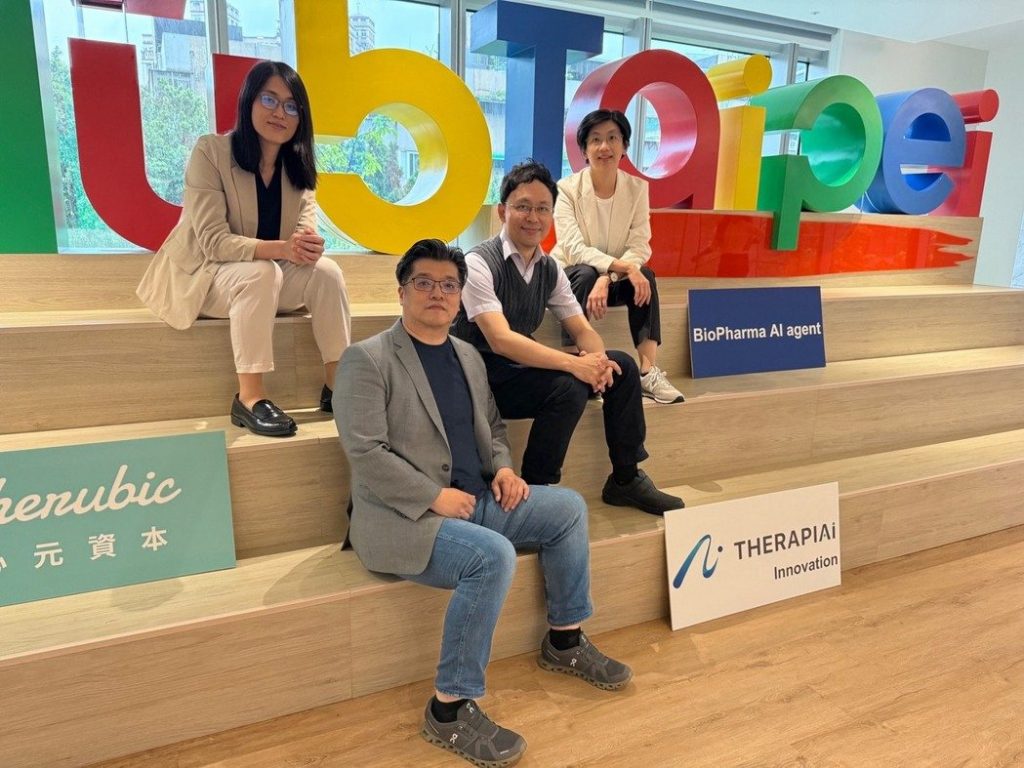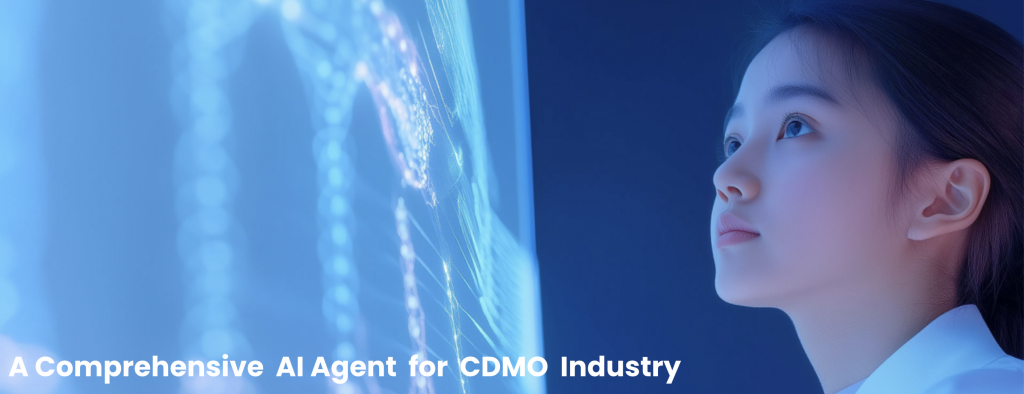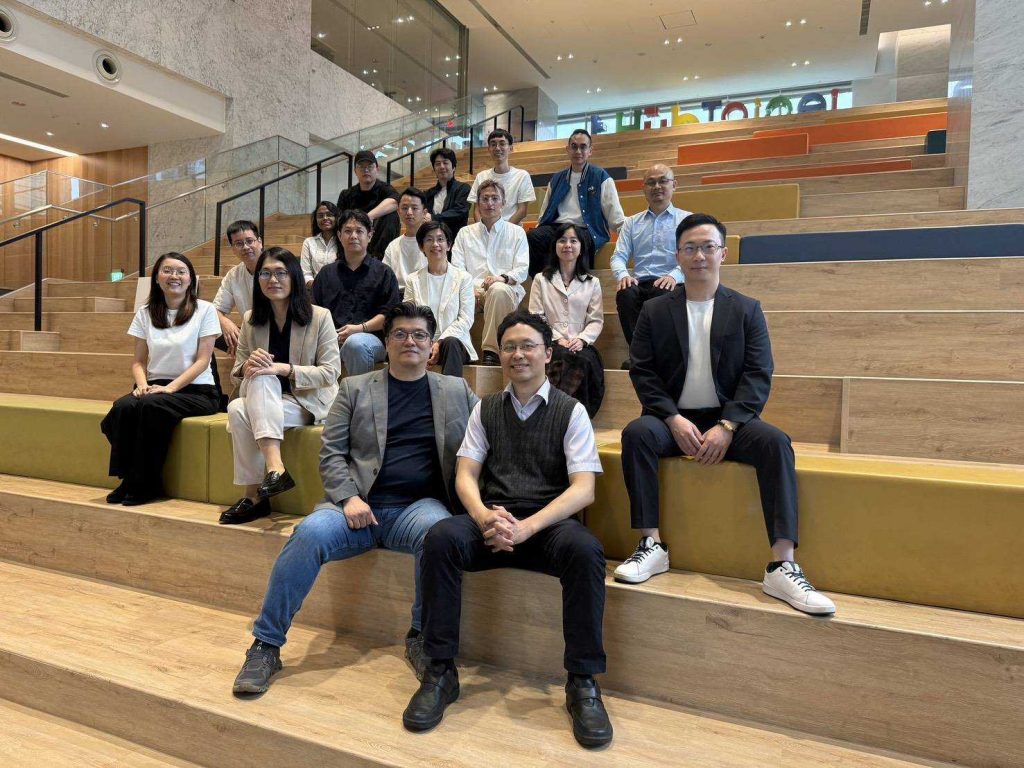Not every AI revolution is born in Silicon Valley.
Silicon Valley is the hub of the world’s AI companies, but not all industry-disrupting AI start-ups begin there.
Taiwan-based TherapiAI, founded by a group of AI experts and medical specialists, has built an AI platform that helps biotech companies, pharmaceutical manufacturers, and CDMOs (Contract Development and Manufacturing Organizations) save raw materials and speed up production lines—allowing pharmaceutical production to run at ten times the speed, no longer dragged down by cumbersome traditional processes.
The structural bottlenecks that have accumulated in the biopharma industry over the years are clear: fragmented experimental data, slow R&D processes, shortages of specialized manpower, and complicated, time-consuming regulatory documentation cycles. TherapiAI aims to solve these four major pain points. They have built AI infrastructure focused on CDMO and CMC (Chemistry, Manufacturing, and Controls) needs, enabling faster R&D, optimized process parameters, and accelerated documentation and compliance workflows across the board.
Just as smartphones require an operating system to allow apps to work together, TherapiAI functions as an “AI operating platform” for pharmaceutical companies: connecting fragmented data, automating complex workflows, and transforming expert knowledge into reusable AI agents. Work that once relied on specific doctoral experiences to move forward can now be accelerated and scaled.
Crossing from the Courts into Pharmaceuticals: Building Foundational Cross-Domain Capability
Therapi AI, formerly known as Akousist, was founded by Michael Han in 2018. Interestingly, its early work had nothing to do with biopharma. “We previously handled AI-driven automation of electronic case files for 36 courts across Taiwan,” Han explained. Using AI to help court professionals automate large volumes of routine documents was the difficult challenge they were focused on at the time.
This seemingly unrelated experience turned out to be a key capability that allowed Therapi AI to enter the biopharmaceutical industry. The challenges faced by pharmaceutical companies are, in fact, very similar to those faced by the courts: data scattered across ERP, equipment, and laboratory systems; departments seeing different sets of information; and clinical and experimental documents containing sensitive information that cannot leave secure environments.
Through its work with the courts, the Akousist team developed a rigorous approach and deep expertise that enabled AI to “act as an agent” for professionals—performing routine tasks under strict data-security and interoperability constraints. These are precisely the foundational structures most lacking on pharmaceutical production lines, and thus became one of TherapiAI’s core strengths.

However, to understand why this AI infrastructure matters, we must first return to the question: what are the pain points of CDMOs?
The Four CDMO Pain Points: Data, Process, Manpower, and Regulations
First is the fundamental issue of data silos. On pharmaceutical manufacturing floors, critical experimental data is often scattered across instruments, paper records, and systems used by different departments. Formats are incompatible, and it is difficult to compare everything on a single platform.
Second, the high variability of cell and drug processes makes scale-up especially challenging. These processes are extremely sensitive to parameters and environments, where even tiny deviations can cause multi-million-dollar experiments to fail. While cells exist in relatively simple conditions in laboratory settings, once they enter large reactors, every parameter must be recalibrated. Pharmaceutical companies often rely on repeated trial and error and additional batches of raw materials to identify a stable process for production.
The third pain point is the manpower bottleneck created by heavy reliance on experts.
CDMO projects are complex and lengthy, taking an average of 18 months just to sign a contract. Much of the workload falls on a handful of senior VPs, BDs, and PMs. Take PMs as an example. CDMOs commonly face shortages of experienced PMs, high turnover rates, and overwhelming workloads. Even more challenging, key process know-how often sits only in the minds of PhDs, so when a core PhD leaves, the entire line has to be rebuilt from the ground up.
The final and most difficult pain point is data sensitivity and regulatory pressure.
In CDMO operations, much of the data is highly confidential and inherently unsuitable for the public cloud. A deeper issue is that “the whole industry shares a common misconception: that the first step to adopting AI is to centralize all the data,” Han explained. “But centralized data processing is slow, expensive, easily costing millions, and it may not even be effective.” As a result, although most pharmaceutical companies understand the potential benefits of AI, many prefer to maintain the status quo rather than take risks.
What Does TherapiAI Do? Building the AI Operating Platform for the Biopharmaceutical Industry
TherapiAI’s technical architecture consists of two core layers: the underlying “Knowledge Layer Model” and the front-end “AI agents.” At the knowledge layer, the team integrates publicly available global datasets with CDMO internal production data, enabling AI to genuinely understand highly specialized pharmaceutical knowledge. Such adjustments turn the models into a credible base for pharmaceutical companies and lay the groundwork for subsequent automation and application capabilities.
On top of this foundation, TherapiAI goes on to build AI agents that can “actually do the work.” These agents are not designed to serve a single function but rather to address the three interlocking stages of the pharmaceutical process: research, exploration, and exploitation.
First of all, in the research stage, AI must follow a “better none than wrong” principle. This working environment demands high precision and has nearly zero tolerance for error. If the model lacks sufficient supporting data, it will simply respond with “I don’t know,” avoiding incorrect inferences. This allows researchers to treat AI as a trustworthy information partner rather than a black box requiring constant verification.
Next is the exploration stage, during which researchers seek not just answers but AI-assisted reasoning. At this point, the AI agent uses its built-in knowledge and cross-system data to propose possible parameter ranges, hypothesis paths, or potential causes of anomalies, helping researchers shorten experimental iteration cycles. This marks the key transition from “looking up information” to “thinking together.”
Finally, in the exploitation stage, AI formally “enters the production line,” transforming research outcomes into operational workflows—such as performing cell-line screening; automatically generating contracts, process documents, and GMP reports; and querying FDA regulations—all directly addressing CDMO pain points.

For pharmaceutical companies, research directions converge faster, manufacturing can identify stable parameters with fewer raw materials, and regulatory teams can reduce document turnaround and revision cycles. Tasks that once required weeks of cross-checking by senior PMs or PhD-level personnel can now produce a preliminary version in minutes, ready for expert review.
Han notes that TherapiAI’s core is stripping away all non-domain noise from large language models, leaving only pharmaceutical-relevant knowledge. Combined with its three-stage agent workflow, the model not only “answers questions” but can “actually get work done” on R&D and production floors. That is why TherapiAI offers not just standalone tools but AI infrastructure that compresses the entire development cycle to a fraction of its previous length.
Practical Applications of AI Agents: Accelerating “Magic Bullet” ADC Drug Development and Tracking Regulatory Changes
TherapiAI’s AI agents are already being applied in a number of highly specialized domains. Among them, the most representative case involves the development of ADCs (Antibody-Drug Conjugates), a field that has drawn much attention in recent years. Because ADCs can precisely deliver payloads without damaging normal cells, they are regarded as a major breakthrough in cancer therapy and nicknamed “magic bullets,” with licensing deals often reaching billions of dollars.
In this trial-intensive, highly complex domain, TherapiAI has built an AI agent specifically for ADC development. After researchers pose questions in natural language, the system automatically integrates cross-system and cross-literature data—covering antibodies, linkers, payloads, and other core components—and organizes design factors that influence efficacy and toxicity. This enables teams to evaluate the feasibility of different strategies early on, without repeatedly cross-checking literature and databases.
More importantly, the ADC AI agent highlights parameters likely to require adjustment later, helping teams to quickly narrow down their direction. For pharmaceutical companies and CDMOs, this reduces the number of unnecessary experiment cycles, dramatically shortens the traditional 2–3 year early exploration phase, and enables earlier entry into development stages with commercial value.

In the highly sensitive regulatory domain, TherapiAI uses its GMP AI agent to challenge manual workflows and help companies stay current with global regulatory changes.
The system can instantly search, compare, and interpret international regulatory texts such as FDA and ICH guidelines, and automatically detect inconsistencies or gaps across department documents, ensuring alignment and preventing delays caused by version errors.
The GMP AI agent can also simulate questions likely to be raised by reviewers using its built-in risk-prediction model, marking high-risk sections on a “risk map” so documents undergo a round of pre-review before submission.
TherapiAI has already been deployed at multiple pharmaceutical companies and CDMOs across Taiwan, Japan, and other places, supporting use cases such as early ADC design, cell-line screening, automated process documentation, and GMP regulatory comparison. Some customers have integrated AI agents directly into their production workflows for cross-department collaboration and document generation; others, after adopting the system, have proactively requested new features, hoping to shift more critical process steps from manual work to AI automation. These collaborations have allowed TherapiAI to evolve into an essential operating layer in the pharmaceutical production chain.
Are You Selling a “Solution” or a “Tool”?
Many deeptech start-ups encounter the same early-stage blind spot: strong technology does not automatically translate into perceived value, and having many tools does not mean that customers want to assemble them themselves. TherapiAI faced the same issue.
“We started with the technology, expecting customers to operate everything on their own,” Han said. However, most pharmaceutical teams are overwhelmed with work. They simply don’t have the time, and therefore won’t pay for “tools.” Whether a tool is powerful or not is a separate issue from whether it solves real on-site problems.
The team later realized that “experts don’t need a powerful tool, yet they need their pain point solved directly.” Han explained, “Within two weeks, we pulled back all the separate tools, stopped selling technology, and transformed it into AI agents that could directly complete work.” For example, their previously standalone OCR module was integrated into a GMP document AI agent. Once the “tool” became an “agent” capable of delivering outcomes, its value became immediately clear: customers were willing to pay and more willing to adopt.
Customers do not want separate tools; they want foundational capabilities that truly integrate R&D, manufacturing, documentation, and regulatory workflows. TherapiAI is not merely creating tools to solve individual problems; it is building an AI operating platform capable of reshaping the entire biopharma sector.
Not every AI revolution begins in Silicon Valley. TherapiAI, a team from Taiwan, offers a glimpse of another future possibility: the next major breakthrough will not depend on geographical coordinates but on who can bring AI into the world’s most complex and critical operational sites.


